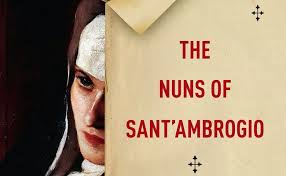The Nuns of Saint’ Ambrogio: The True Story of a Covent Scandal
By Hubert Wolf (Oxford University Press, £20.00)
When the Church these days is besieged by scandal many seem to think that in previous generations things were different. They were certainly different, but in the sense of being far worse, as this book, by a distinguished German Catholic historian, reveals.
The subtitle may seem distressingly akin to those famous propagandist books circulated in the 19th Century, such as The Awful Disclosers of Maria Monk, which were themselves the subject of vituperative controversy. But Hubert Woolf has a more interesting and far more serious purpose.
He studied Catholic theology at Tubingen and was ordained in 1985. He is one of the leading Catholic historians of recent times. He is currently professor of Ecclesiastical History at the University of Münster, and is a widely recognised authority of the history of the Papacy, the author of many books including Pope and Devil: the Vatican Archive and The Third Reich.
Story
This story opens in 1859, when a letter from a German princess, Katherine von Hohenzollern, who was a nun in the convent of Sant’ Ambrogio in Rome, wrote to her cousin, who was close to the Pope of the day, claiming she was being abused and feared she would be murdered by poison. She was soon rescued from the place.
The Inquisition was called upon to investigate the matter, and in due course revealed to the Church authorities the brutally autocratic manner of the convent superior, Mother Maria Luis.
The convent itself was dissolved in 1883 – the building is now a church.
The sealed-up judicial papers were overlooked in the Vatican archives until recovered by Prof. Woolf, the matter being kept as secret as possible at the time, given the connections of those concerned.
The scandal may well strike the modern reader as being quite extraordinary, involving as it does what we can discreetly call Sapphic aberrations among the sisters, bizarre devotions to the founder of the convent, the manipulation, not only of the order but of the Church itself.
Though originally covered-up, events are undeniable. It is what we make of them, and what we can learn from them that is important.
The author’s purpose is to use this case, unusual as it may have been, to investigate the actual working of the Church, the Holy Office, and the strange world of aristocratic nuns, the younger daughters of the highest families in Germany and Austria.
For his research extends further than the events into the later life of those involved, especially the delinquent Jesuit, Fr Peters, who was certainly punished, but then quietly released to reinvent himself as a conservative theologian under another name at the time of the First Vatican Council when he argued strenuously for the very widest interpretation possible of the dogma of Papal infallibility – not merely solemn doctrines or the ordinary magisterium, but the most casual pronouncements of the Pope.
This made him an influential figure in that controversial matter, which certainly seems a strange contrast to what he was in earlier life. The princess, who died in 1893, was the founder of the Benedictine convent at Beuron in south Germany.
That atmosphere of aristocracy and well placed families which the Church was liable to find distorted its ideas, theological, social and charitable, is now a thing of the past, when wider access to education has brought into the Church people from all levels of society, leading to wider views of what a true reading of the Gospels might involve.
Whatever the scandals and disputes of the present day, a more open climate of discussion, the sanctity of a free press, and a more insightful view of human nature in some upper levels of the Church, would seem to make such a scandal impossible these days; or so one hopes.
Extensive research
This is a book based on extensive and most painstaking archival research of an original kind, the kind of research on which true insights will always be based. But nevertheless this sober history will be found quite shocking to some sensibilities – potential readers are warned.
But to those concerned with the history of the Church in the formative 19th century, or those concerned with the roots of present day Church attitudes in that period, this will be a book of the very greatest interest, not for the scandalous misbehaviours of some in religion, but for the manner in which Church’s bureaucracy can function for both good and bad.
But on leaving Prof. Wolf’s work down a reader cannot but speculate on what equally astounding revelations are yet to come from the once Secret Archives of the Vatican.


 Peter Costello
Peter Costello
